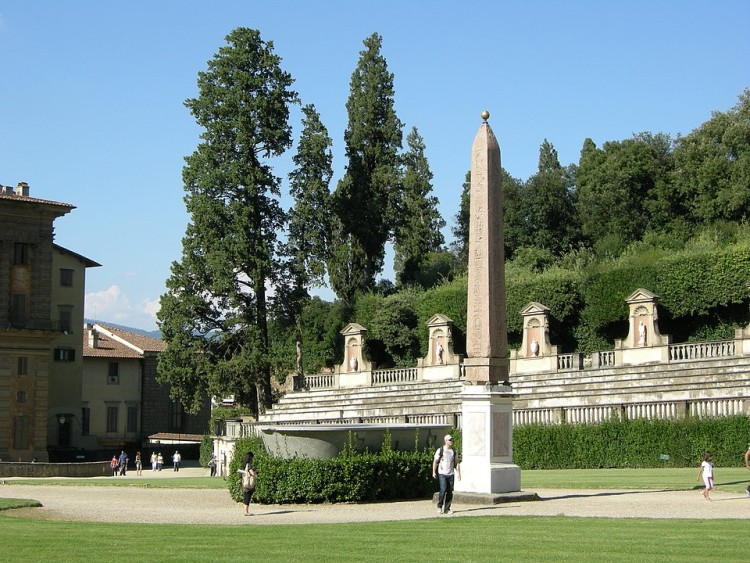 DIDA
Browse
How it works
Insert your collection
News
Contacts us
DIDA
Browse
How it works
Insert your collection
News
Contacts us
Type:
Room: Anfiteatro

Description
The Boboli obelisk is a red granite Egyptian obelisk located in the Boboli Gardens in Florence. It is the only ancient obelisk in Tuscany and comes from Rome (formerly in the Villa Medici collections), where it was transported from Egypt in the first century A.D. It is 6.34 meters high. The stone material in which the obelisk is carved comes from Aswan, and the inscriptions that decorate it recall Atum, an important deity of the city of Heliopolis. Despite the fact that the original location and the time of erection are not exactly known the inscriptions lead to place its construction around the reign of Rameses II (1297-1213 B.C.), and its provenance, as with other Roman obelisks, precisely from Heliopolis. Transferred to Rome by Domitian it was placed in the Temple of Isis on the Campus Martius, along with the obelisk of Dogali, the Pantheon and Minerva (all of which later remained in Rome). In the Renaissance, Cardinal Ferdinando de' Medici purchased it in the papal city and placed it among the magnificent collections of antiquities at the Villa Medici, where it was placed in the gardens on the Pincio. The obelisk had some symbolic references to the Medici lineage that were of particular value to its purchaser, such as its correlation with solar symbolism (represented by the sphere on the top, which is original), the turtles on the base (also ancient) or its provenance from the Campus Martius, an area sacred to the "Etruscan" (and therefore "Tuscan") king Tarquinius Priscus and to Mars, believed to be the ancient protector of Florentia. When Grand Duke Peter Leopold of Lorraine decided to bring all the transportable property of the Villa Medici to Florence, as heir to the state property of the House of Medici, the obelisk left in June 1788. The obelisk traveled by sea and landed in Livorno, then arrived in Florence in October, anticipated by the base turtles and the solar sphere that had already been transported by land. Various hypotheses were made for its new location: south of the Ponte Vecchio
Photo Credits: commons.wikimedia.org - Text Credits: it.wikipedia.org
More artworks in Anfiteatro
If you are not at the museum click on the link below and you can test our guide by framing some works directly on the DEMO page.

If you are near the museum you can reach it and by framing with your mobile you can discover the audio guide.
